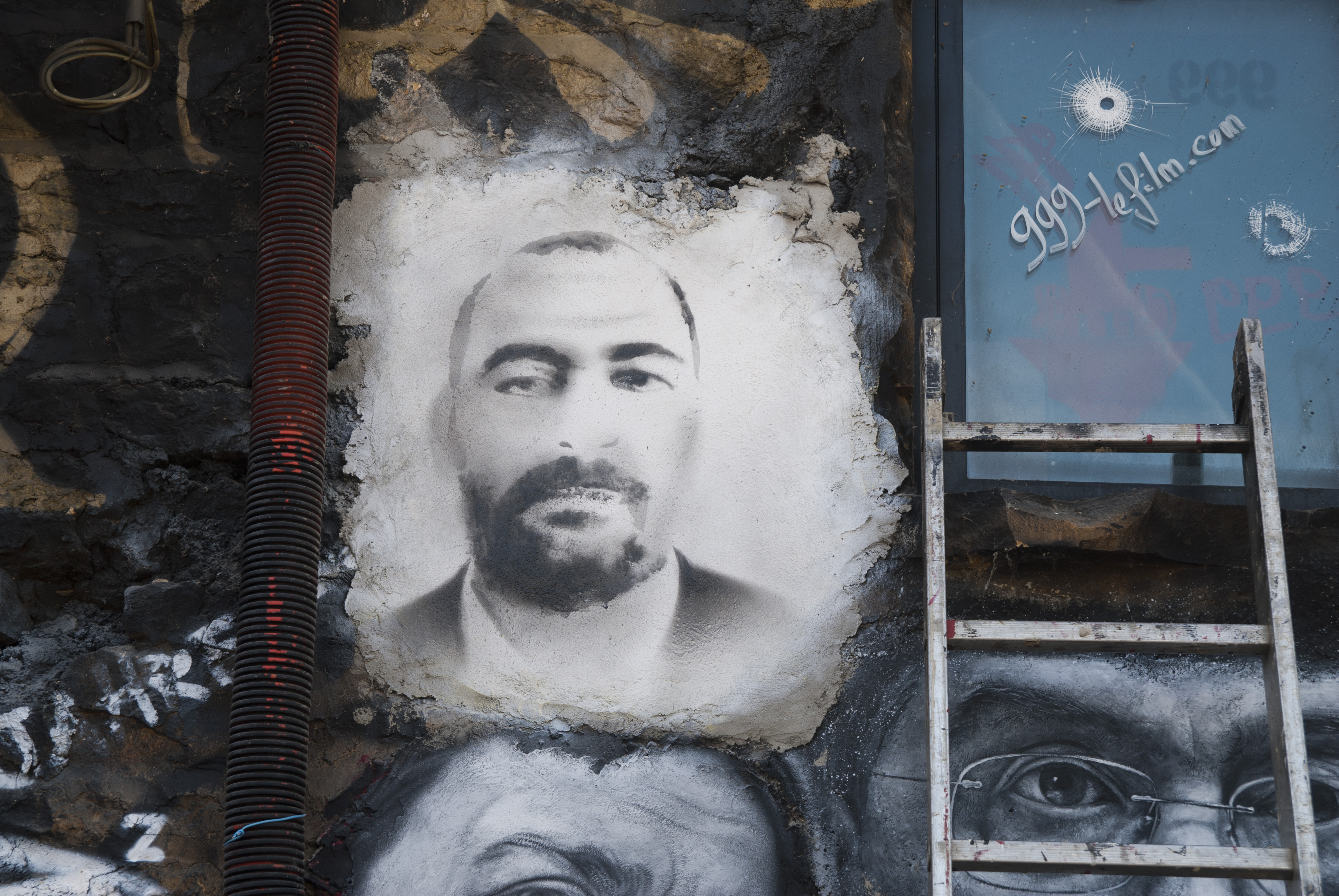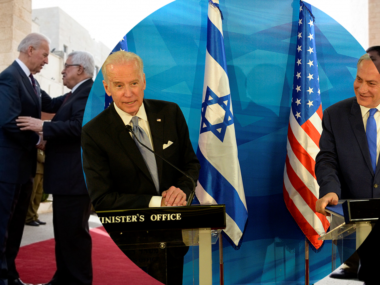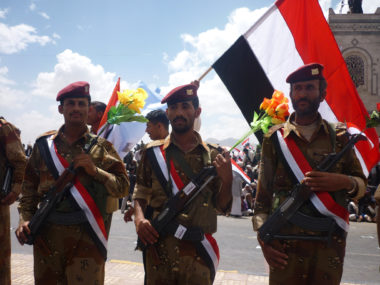Guest post by Jack A. Goldstone

The Islamic State in Iraq and Syria (ISIS) has emerged as the most terrifying and brutal of extreme jihadist groups (and it’s up against tough competition, such as Boko Haram in Nigeria and Al-Shabaab in Somalia).
Why have such extreme Islamist groups emerged in so many places in recent years?
Odd as this may sound, it is not because of the appeal of extreme Islam itself. A study of fighters in Syria by Mironova, Mrie, and Whitt found that most fighters join ISIS and similar groups because (1) they want vengeance against the Assad regime and (2) they found from experience that the Islamist groups take the best care of their fighters — caring for the wounded, supporting them in battle, etc. In situations of social breakdown — which are generally NOT caused by the Islamist groups themselves, but by problems of finances, elite divisions, and popular unrest due to oppressive or arbitrary actions by the state – extremists tend to have major advantages.
This has always been the case through the history of revolutions: moderates are usually outflanked, outmaneuvered and out-recruited by radicals; so much so that the triumph of radicals over moderates is a staple of academic work on the trajectory of revolutions, from Crane Brinton to my own.
Why does this occur? In situations of major social breakdown, involving violence, disorder, and the collapse of established institutions, moderates — whose main qualification was usually experience in, and command of, those now-collapsed institutions — simply do not have the resources to establish order, nor do they have the drive and discipline to start from scratch. Instead, they often are equally concerned about how to protect what remains of their position and wealth, and are distrustful of others competing for power.
Radicals, by contrast, start fresh. They draw on the inspiration of their ideological cause, but that is not what matters to others. What matters is that radicals are usually willing to make sacrifices, to embrace all supporters, and to build a new community to pursue their goals. They are the most zealous in pursuit of what people want and need in times of collapse: local order, discipline, a supportive community, and success in attacking perceived enemies.
Radicals thus add organizational power and discipline to their ideological message. It is the former, not the latter, that draws in followers. Yet the ideological message cannot be neglected; as a number of scholars have shown, once radicals are in power, that message shapes their post-revolutionary policies. Extremists in seeking power are often extremists in power, which makes them so dangerous. Moreover, those who initially join radical movements for discipline and community support are often indoctrinated and become convinced supporters of the radical cause.
ISIS is not just a terrorist or jihadist group; it is a revolutionary movement, seeking to overthrow governments to create a new regime (the Islamic caliphate) that it views as more socially just than the secular dictators it is fighting. The power of such revolutionary radicals should not be underestimated. Both conservatives and moderates in Russia dismissed the Bolsheviks as a small group of terrorists; but in the chaos following World War I they created an expansionist communist state that lasted almost a century.
The rise of ISIS is interwoven with several other conflicts that it did not produce but that have given it the opportunity to thrive: that between Sunnis and other Iraqis for control of Iraq, a conflict that goes back to Saddam Hussein and was heightened by the US invasion and the civil war it unleashed; that between Sunnis and other Syrians for control of Syria, a conflict that goes back to the founding of the Assad dynasty and beyond; and that between Sunnis and Shias for control of the Middle East, a struggle that goes back hundreds of years but has recently been inflamed by struggles among Turkey, Iran, Saudi Arabia, and the Gulf Emirates for domination in the region. ISIS feeds off of all of these conflicts, and offers its followers a way to be powerful and secure amidst chaos.
This analysis indicates a three-fold approach is needed to deal with ISIS. First, military reprisals to blunt its success and undermine the feeling of invincibility it has given to its converts. These can only come from forces at least as well-organized and disciplined. However, at present the only such force in the region is the Kurdish peshmerga; but this is a militia without heavy arms or air power and which has no ability to project power beyond the borders of its own enclave in northern Iraq. Thus external forces — the U.S., or NATO — must play a major role.
Second, the civil institutions that provide a power-base for moderate political organizations and their leaders must be rebuilt and given credibility. In Syria, this cannot happen until the Assad regime falls; in Iraq this cannot happen until a post-Maliki government establishes its credibility and effectiveness. And as long as the main supporter of the Iraqi government is Iran, with its policy of seeking a strongly Shia-dominated and anti-Sunni regime in Iraq, no Iraqi government will gain credibility with the Sunnis of Iraq who support ISIS. Given that the Assad regime looks unlikely to topple given its support by Russia and Iran, and that Iran is unlikely to give up its goals to shape a friendly regime next door in Iraq, the prospects for the second step remain poor. This raises a huge strategic question for the U.S. — even if military intervention stops ISIS for now, how can the second phase of putting effective moderate regimes in power that will win supporters away from ISIS be accomplished?
Third, the ongoing Sunni-Shia conflict in the Middle East is fueling every sort of violent group: Hezbollah, Hamas, ISIS, and others. At some point, the global community will have to lean on Iran, Saudi Arabia, and Turkey to cease their proxy wars and come to an agreement similar to that of 1648 in Europe, which ended the Thirty Years War that capped over a century of religious conflicts: every country can control its religious policy within its own borders, but agrees to stop meddling in religious conflicts in other countries and to respect other countries’ full sovereignty. This may be a distant goal (it took nearly a century in Europe) but is vital if the region is ever to know stable peace.
In sum, America’s hasty retreat from Iraq left much unfinished business, which has now arisen in the form of the radical ISIS threat. To contain that threat will require both a coordinated military response, and the sustained effort to create credible and legitimate government institutions that the U.S. abandoned too soon. It may also require stronger efforts (air strikes similar to those aimed at ISIS) to undermine the Assad regime; as long as Assad remains in power radical jihadis will continue to seek vengeance for the acts he has already committed.
This sounds costly and time-consuming. It is; much as it took an international coalition to bring Napoleon to his Waterloo, it will take an international coalition and sustained effort to bring down radical Islamist movements in the Middle East. Yet the lesson of history is that without this effort, we will see the rise of an increasingly powerful radical jihadist revolutionary state spreading across the entire Middle East. That is the present choice that our past choices have left us.
Jack A. Goldstone is the Virginia E. and John T. Hazel Professor of Public Policy at George Mason University, and a non-resident Senior Fellow at the Brookings Institution.







8 comments
These recommendations have the sunken cost fallicy written all over them.
Another 10 years? A few hundred billion more dollars to “train and equip”? How much more American blood?
What are the political ends we are fighting for? The status quo? A New Democratic Middle East? The downfall of Assad, or perhaps the downfall of ISIS – no even better, let’s do it all!
america always thinks that it can walk into any country, topple the exixting regime and walkaway after installing a puppet regime under its remote control. this didnot happen in vietnam, it is not going to happen in afganisthan or middle east. do you remember that the same sunnies, shias and christians were living together under sadaam’s rule. his rule was a binding force. america broke that and things have fallen apart.